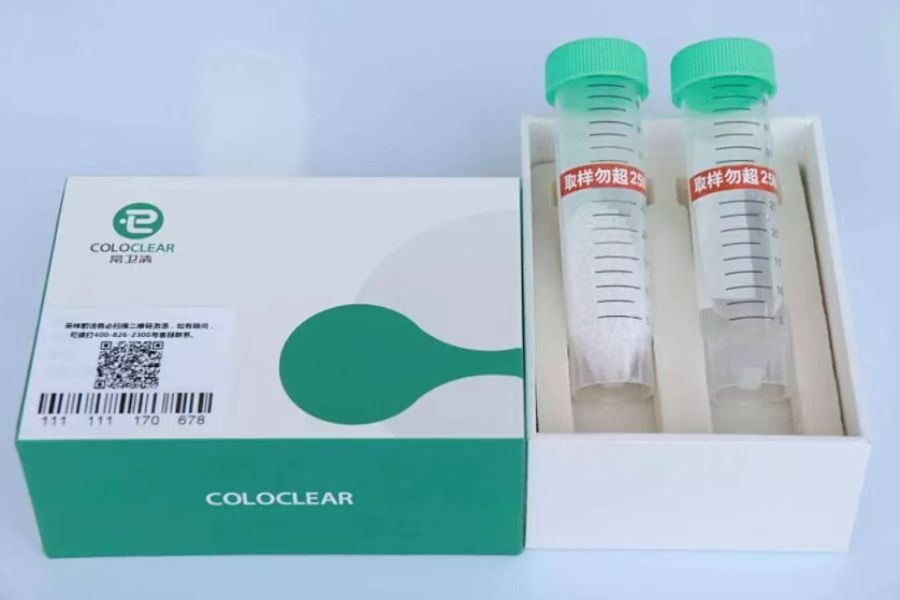Relieved of ‘high-risk’ marker, New Horizon Health aims to break even next year

Encouraged by its fast-growing revenue last year, the cancer screening device maker believes its losses may end in 2023
Key Takeaways:
- New Horizon Health is expected to attract more investors after becoming the seventh Hong Kong biotech stock to shed a designation reserved for high-risk stocks
- The company’s gross margin has climbed to 84.5% and is expected to remain at 85% to 90% going forward
By Molly Wen
The China market for early-screening cancer products has grown rapidly in recent years, fueled by the country’s huge cancer caseload and a growing middle class that can afford such services.One major beneficiary of that boom is New Horizon Health Ltd. (6606.HK), whose latest results released last week show its revenue more than tripled to 765 million yuan ($110.8 million) last year.
Equally significant, the report also showed the company’s adjusted loss last year narrowed by 59.6% to 100 million yuan. Its improving financial health didn’t end there. The company also said its application to remove the “B” marker from its ticker, which designates high risk stocks, was approved and took effect on March 20. That successful step makes New Horizon the seventh biotech company to shed the marker, joining the likes of BeiGene (BGNE.US; 6160.HK; 688235.SH), Shanghai Junshi Biosciences (1877.HK; 688180.SH) and Zai Lab (ZLAB.US; 9688.HK).
Hong Kong first began allowing biotech companies with no revenue or profits to list in 2018, but required them to carry the “B” marker to alert investors to their higher risks. As of 2022, 56 companies had listed in Hong Kong under that rule change. A more recent addition says companies with annual revenue greater than HK$500 million ($64 million) and market capitalization above HK$4 billion can apply to have the “B” mark removed, giving them the equivalent of a regular listing on Hong Kong’s main board.
Removal of the “B” not only marks a biotech’s maturation, but also gives it a higher chance for inclusion in local stock indexes and the program that makes some Hong Kong stocks accessible to mainland China-based buyers. One example of that is BeiGene, which was included in the benchmark Hang Seng Composite Index after losing its “B” marker in July 2019. Its shares were also added to the stock connect program in September the following year.
Despite the raft of good news, New Horizon’s shares actually fell 4.4% last Tuesday after the latest announcements. But they gained back all of that and more with a 10.6% rise the next day, showing investors are broadly positive on the company even if they still have some doubts.
Outstanding gross margin
Compared with traditional early-screening cancer technology, New Horizon’s products not only boast high sensitivity and specificity, but also enjoy better convenience and faster results. The company is now fully geared up to bring its three approved products to market, providing the main engine behind last year’s rapid growth.
Among its three products for sale, its ColoClear colorectal cancer screening product brought in 356 million yuan last year, up 266.2% from 2021. Its Pupu Tube, the first self-testing device for fecal occult blood in China, recorded a 73.7% revenue increase to 201 million yuan. And its UU Tube, the first self-testing Helicobacter Pylori screening product in China, achieved revenue of 208 million yuan after being approved by China’s regulator at the beginning of last year.
The rising sales helped New Horizon’s gross margin to also improve significantly, climbing to 84.5% from 72.7% in 2021 as it gained economies of scale. Among its three products, ColoClear’s gross margin rose to 83.4% from 76%, while Pupu Tube’s and UU Tube’s gross margins were 82.1% and 90.7%, respectively.
New Horizon CEO Zhu Yeqing said UU Tube has a higher gross margin than the other two products due to its status as a consumer device, while the others must be administered by hospitals and medical examination centers. He added that improving economies of scale and more efficient production over time should help the overall gross margin stay between 85% and 90% going forward.
Despite its rapid growth, New Horizon remained in the red last year, largely due to high selling costs. Its sales and marketing expenses reached 560 million yuan for the year, equal to 70.5% of total revenue. R&D expenses were far smaller at 87.9 million yuan. Zhu explained the high marketing expenses were related to market education and academic promotion, which are typically high shortly after a new product gets approved and gradually decrease over time.
CFO Gao Yu revealed the company expects to be close to break-even this year, and to achieve complete break-even in 2024.
Empty pipeline for the near-term
New Horizon’s current product lineup focuses on early detection for rectal and gastric cancers, but its new product pipeline also covers liver, cervical, nasopharyngeal and other cancers. The most advanced of those is its CerviClear urine sample-based cervical cancer screening product, which has already started registration for a large-scale clinical trial expected to wrap up in 2026. Its LiverClear test for early liver cancer detection has yet to enter clinical trials.
To boost its growth in the shorter term, the company is now focused on expanding its footprint in China and also moving into offshore markets, with Hong Kong as the first stop. It partnered with Hong Kong-based testing company Prenetics Global (PRE.US) last May to launch ColoClear in Hong Kong, and brought UU Tube to the market in January this year with local partner Phase Scientific. New Horizon has also established a new offshore R&D center in Hong Kong, with plans to recruit 20 to 30 scientists and invest HK$100 million over the next five years.
Its rapid growth has also won plaudits from international investment banks. Goldman Sachs’ latest report raised its sales forecasts for the company by 3% and 1% for this year and next year, respectively. It also boosted its profit forecasts by 62%, 21% and 30% from 2023 to 2025 to reflect higher average selling prices, an optimized sales pipeline mix, and lower ratios for management and R&D expenses to revenue.
New Horizon’s latest price-to-sales (P/S) ratio stands at a high level of about 30.8 times, much more than the 3.8 times for New York-listed peer Burning Rock Biotech (BNR.US), partly owing to the former’s closer proximity to profitability. It may continue to enjoy such a premium if it can actually reach the breakeven goal next year, and show strong profit growth after that.
To subscribe to Bamboo Works weekly free newsletter, click here






